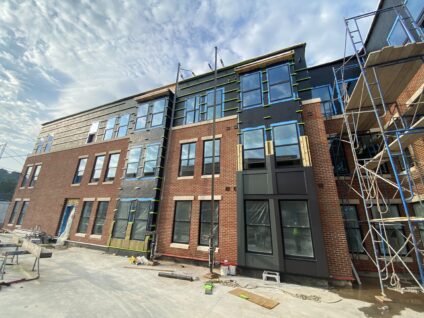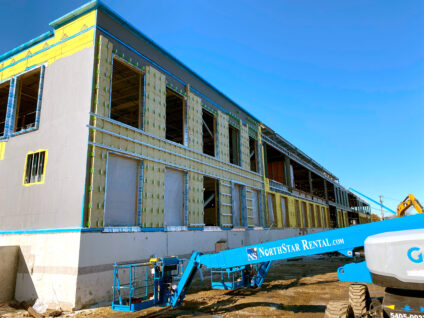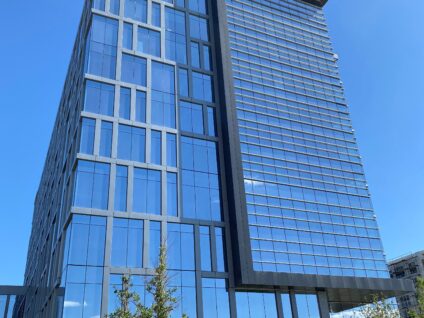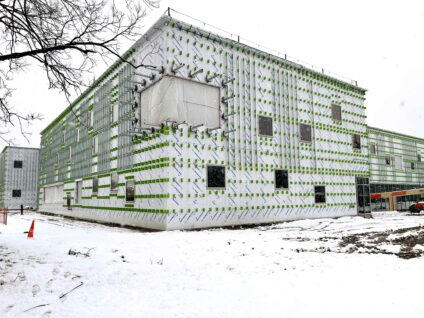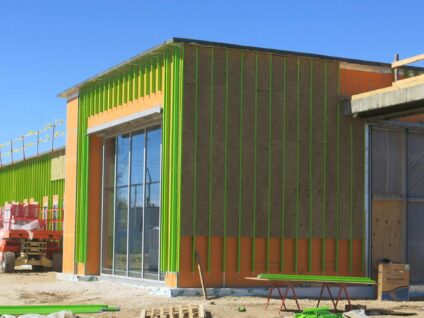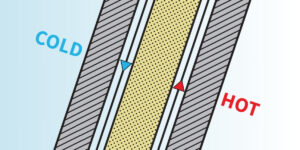Introduction
In order to ensure the safety of a building, it is important to fire test all materials used in its construction. The NFPA 285 standard test method analyzes the fire performance, flammability, and fire propagation characteristics of an exterior wall assembly containing combustible components. This test is commonly required by local jurisdictions when approving construction plans. In this article, we will provide an overview of NFPA 285 testing and explain how it can help keep your building safe from fire.
What is NFPA 285 fire testing?
NFPA 285 is a standard fire test method for evaluation of the fire resistance of exterior wall assemblies. This method involves exposing the tested assembly to an external periodic flame envelope and then measuring temperature rise, char amount, and extent of burning.
The test is designed to simulate a real-world fire situation. NFPA 285 provides guidance on the minimum standard of fire safety for exterior wall assemblies, ensuring that buildings are safe in the event of a fire. By following this testing protocol, builders can be confident that their building materials will adequately protect against the spread of fire.
Why is NFPA 285 crucial for fire safety testing of wall assemblies?
By providing acceptable criteria for combustible components or assembly practiced in the exterior walls of buildings, this standard helps to achieve optimal fire safety performance while maintaining desired overall aesthetic design characteristics. Adequate compliance with NFPA 285 tests is highly recommended within the building industry as it is used as an effective tool for reducing blaze risks in commercial building walls.
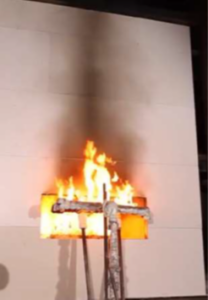
What are the benefits of using NFPA 285 testing in construction projects?
NFPA 285 testing is an essential tool for assessing a construction project’s fire safety and performance. The test method for evaluation of exterior wall assemblies to limit the spread of fire from one area to another. When thoroughly implemented, NFPA 285 can have various benefits, such as searching for breaches in a combustible component, ensuring the safety of your building’s walls, helping local municipalities meet code requirements, and minimizing false alarms that could otherwise overwhelm emergency services.
By garnering insight into how components will react to the spreading of flames, NFPA 285 can provide critical information during hazardous events and ultimately help design safer structures.
How does NFPA 285 testing help to ensure the safety of occupants in a building during an emergency situation?
The NFPA 285 standard fire test method is an important part of making sure buildings are safe during any potential emergency. This testing examines combustible components for exterior walls and assesses how quickly a fire would spread by measuring how quickly the combustible materials ignite and transmit flames.
By conducting a NFPA 285 assembly test before use, designers can be assured that their building meets the necessary standards to protect occupants in case of an emergency. Additionally, this type of testing helps architects choose safe construction materials and assemblies which minimizes the risks faced by occupants in buildings when such an event occurs.
What are some of the challenges associated with conducting NFPA 285 fire testing?
One of the main challenges associated with conducting NFPA 285 tests on building components is the complexity of the process. This type of test method requires specialized equipment, an experienced team of personnel and a controlled environment in order to be carried out correctly. Moreover, it can take several weeks or even months for a complete series of tests to be completed depending on the materials being tested.
Second, there is the challenge of accessibility, as the test location can be a limiting factor in getting results quickly. In addition to this, NFPA 285 tests often require considerable resources in terms of labor, equipment, and other components that may not always be readily available.
Additionally, conducting successful NFPA 285 tests also requires a deep understanding of local building codes and regulations. Since these may vary between different jurisdictions, it is important to ensure that all of the necessary information is available before attempting any tests.
How can architects and engineers ensure that their projects meet safety standards set by the NFPA 285 code requirements?
Architects and engineers must take a proactive approach to ensure that their projects meet safety standards set by the NFPA 285 code requirements. To do this, professionals should carefully consider all components used in the project, as some are more susceptible to fire than others. It is also essential to use only those materials which have been tested according to NFPA 285 standards, as this will help ensure that the building meets all applicable safety requirements. Additionally, keeping up to date with local building codes and regulations is essential to stay compliant with NFPA 285 standards.
Moreover, architects and engineers should work closely with stakeholders and manufacturers throughout the design process to ensure that any fire separation assemblies are properly installed and maintained. Many manufacturers provide testing information on their specific building components. By taking a collaborative approach to fire safety, architects and engineers can ensure that their projects meet the requirements to comply with NFPA 285.
GreenGirt® CMH and SMARTci™ Systems with GreenGirt® Composite Metal Hybrid (CMH™) Z-Girts for Exterior Wall Assemblies

NFPA 285 is a vital assembly test that most building assemblies must meet to ensure occupants’ safety during an emergency. There are many benefits of using NFPA 285 testing in construction projects, but some of the challenges associated with conducting these tests can be overcome by working with experienced professionals. Advanced Architectural Products offers GreenGirt® CMH™ continuous insulation and SMARTci™ building enclosure systems with GreenGirt® CMH™ Z-girts that comply with NFPA 285, so architects and engineers can rest assured that their projects will exceed safety requirements in an entire exterior wall assembly.
Additional Resources
Contact us for more information about GreenGirt® CMH™ continuous insulation and SMARTci™ building enclosure systems.
© 2023 Advanced Architectural Products






